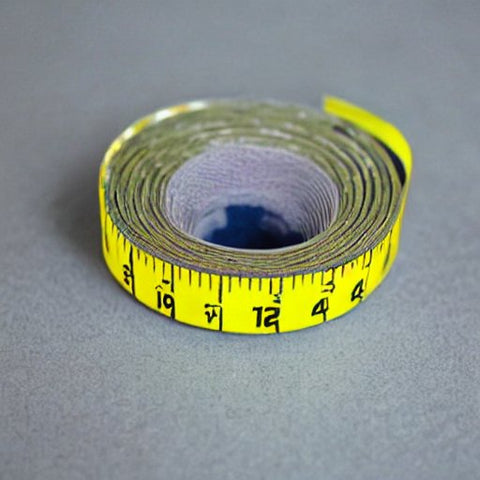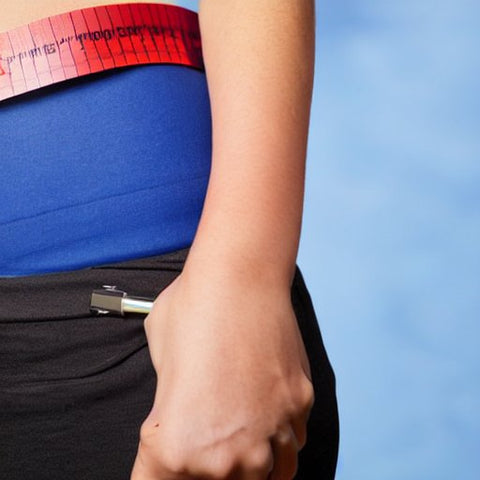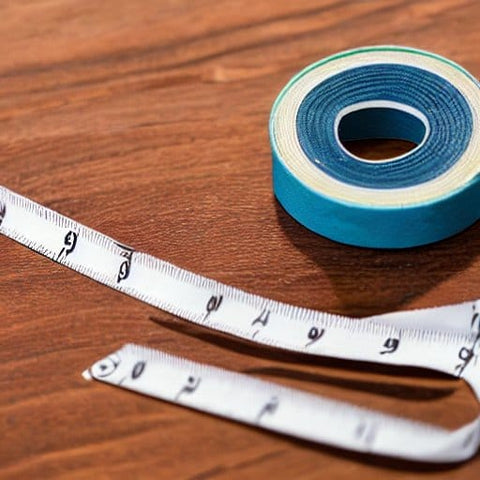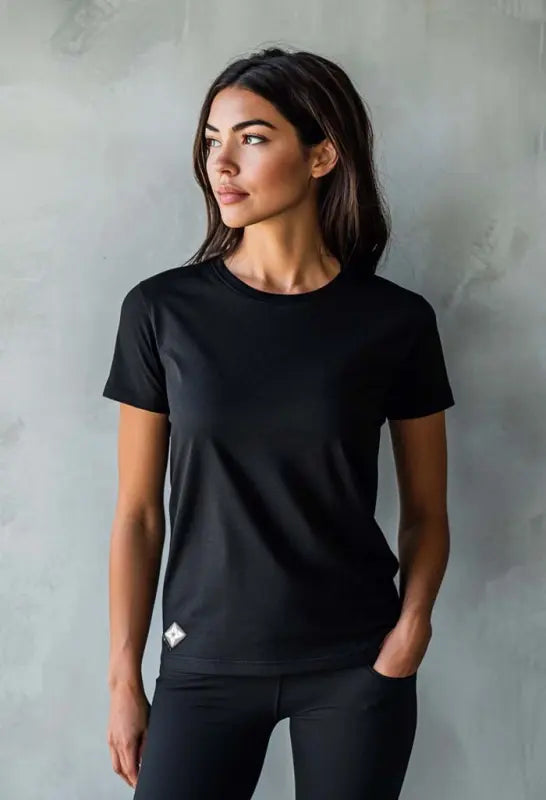How to Determine Your Hip and Waist Sizes
When taking measurements of your body, the waist and the hips are two areas that are very significant to pay attention to, especially if you are planning on purchasing new clothing. It is crucial to the process of fitting your new dress or skirt that you know how to measure these two places.
How to Measure Your Waist:
- Determine the circumference of the waist at its narrowest point, which is normally directly above the navel.
- Make use of a measuring tape or a string and a ruler if you don't have either.
- Maintain an upright stance and let your air out normally.
- Check that the string or measuring tape is snug but not excessively tight.
- Take down the measurement using either centimeters or inches.
- If you do not have access to a size chart, you may calculate the right pant or apparel size by measuring the circumference of your waist instead.
- Because there is a possibility that one side is somewhat different from the other, you will need to repeat the procedure on both sides.
- It is important to keep in mind that various brands and styles may have somewhat varied waist measurements; thus, it is recommended to try on the clothes in order to ensure that it is the correct size.
Stand up straight and breathe out naturally
When determining your waist size, it is essential to stand up straight and let out a natural breath. When determining your waist size, it is essential to stand up straight and let out a natural breath. This will guarantee that the measurement is correct and that the garment, when worn, will rest in the appropriate location.
Use a measuring tape or a piece of string and a ruler
You can measure your waist using either a measuring tape or a piece of string and a ruler. If you don't have a measuring tape, you may use a piece of string and a ruler instead. If you want the most precise measurement possible of your waist, you should use a measuring tape, but you may also use a piece of thread and a ruler.
Measure the narrowest part of the waist, typically just above the navel
Take the measurement around the area of the waist that is the narrowest, which is normally right above the navel: When taking your waist measurement, begin at the smallest section of your waist, which is normally located directly above your navel. Check that the measuring tape or string is snug without being too tight.
Record the measurement in inches or centimeters
Once you have taken the measurement, note it in inches or centimeters once you are finished. When using string as a measuring tool, lay the string out flat against a ruler in order to get the measurement.
Compare the measurement to a size chart or use the waist measurement to determine the appropriate pant or clothing size
Check the measurement against a size chart, or take the circumference of the wearer's waist, to establish the most suitable pant or apparel size: After you have taken your waist measurement, you may refer to a size chart or just use your waist measurement to choose the right size in pants or other articles of apparel. Because various brands and designs may have somewhat varied waist measurements, it is essential to try on the clothes in order to ensure that it is the right size for you.
Repeat the process for both sides, as one side may be slightly different than the other
Repeat the procedure on both sides, since there is a possibility that one side is somewhat different from the other: It is essential that the procedure be carried out on both sides, since the intrinsic asymmetry of the human body sometimes results in one side being noticeably unlike to the other.
It is important to keep in mind that the waist measurement may be altered by a variety of circumstances, including the brand of clothes, the material, and the style of clothing.
Hips
If you are interested in learning how to accurately measure your hips and waist, you should be aware that these two areas of the body have extremely distinct dimensions. In point of fact, the hips sit around 7–8 inches below the natural waistline in most people. Because of this variation, the way your clothes fit could be affected. Because of this, before you go shopping, you should take measurements of both your hips and your waist.
You will need a tape measure as well as some paper and a pen or pencil in order to accurately measure your hips. The measuring tape must to be made of a pliable and gentle material. In addition to this, it is recommended that you make use of a ruler. In a perfect world, the tape would be laid out such that it was parallel to the ground.
It is recommended that you repeat the measurement a few times in order to achieve an accurate result. In addition to this, it is recommended that you seek assistance from a companion. Otherwise, you may have difficulty maintaining the straight position of the tape at the rear.

Be careful to maintain your regular breathing pattern while you are taking the measurement. You won't put any of your muscles under unnecessary tension if you do this. After you've finished, jot down the dimensions on a piece of paper.
It is feasible for you to take your own measurements of your hips and waist, but it is strongly recommended that you ask a friend or member of your family for assistance. By performing things in this manner, you may be certain that you are doing it properly.
Utilizing a firm board is another another method for determining how large your hips are. Having said that, this can be a real hassle to deal with. The use of a mirror to take your hip measurement is the superior option.
Using a piece of string is one of the most straightforward methods to do this task. Take your measurement across your hips where they are the fullest. After you have obtained that measurement, wrap the tape around the garment so that it goes from side seam to side seam.
After you have completed measuring, use a mirror to double verify the results of your measures. Remove any articles of clothing that might potentially affect the accuracy of the measurement.
The hip and waist measurements are essential for monitoring the progress of weight reduction and evaluating general health. The importance of taking precise measurements cannot be overstated for those who work in the apparel industry. You will be able to make more educated purchases, which will save you both time and money when compared to those made without this knowledge.
If you want your measurements to be even more precise, you could think about utilizing a detailed size chart. These are made to show you the size that corresponds most closely to your physique.
Waist
The waist measurement is an excellent indicator of overall health and fitness. Additionally, it aids in the prevention of health problems that are related with having excessive body fat. It's possible that you need to reduce your waist size if you have issues with your waistline.
In general, having a healthy waist measurement will assist you in lowering the chance of developing health conditions such as diabetes and heart disease. A larger waist circumference may be an indicator of harmful amounts of fat in your organs, especially your liver and kidneys.
The waist is a tiny, fleshy region that may be found between the hipbones and the rib cage. A tape measure may be used to determine the length of this portion. On the other hand, in the event that you do not have access to a measuring tape, you may substitute string for it.

An accurate measurement may be obtained through a smartphone app; nevertheless, the use of a tape measure is still recommended whenever possible. For instance, the virtual ruler application that is available for iPhones may assist you in determining the length of your waistline.
When you start to measure your waist, the first thing you need to do is take off any layers of clothes that could be obstructing the region. The next step is to stand up tall. Put the measuring tape in a position where it is parallel to the floor. It is important that you do not hold the tape too tightly, since this might cause the reading that you get to be wrong.
The ideal situation is one in which the tape measure for the waist is level on both sides. After gaining competence in this area, you will be able to proceed to the real measurement.
You might attempt to discover a crazy manner to do this task in order to liven up the experience a little bit. One possible solution is to conceal the measurement by donning a belt or another article of clothing.
Repeating the process several times is the most accurate method for obtaining a decent measurement. If you are still undecided, you should probably talk to a medical professional. This is particularly the case if the waist circumference falls outside of the normal range for a healthy person.
Keep in mind that you should be on the lookout for additional indications of inadequate body measures. For example, if the clothing you are wearing is too large for you, the waist may be higher than you believe it is.
Above the navel is often where you'll find the thinnest area of your waist. It is also a good idea to measure the circumference of your neck.
Inseam
When it comes to purchasing pants, there are a lot of different factors to take into consideration. To begin, you will have to choose how you want the trousers to fit on your body. If you are unclear how to measure the inseam and the waist, you could try using a chart that provides you an idea of how to do so.
To get an accurate measurement of the inseam, you will first need to lay the trousers down flat. This is essential for obtaining reliable measurements. You will need to take a measurement from the bottom of the crotch all the way down to the bottom of the pant leg after you have laid the trousers out on a level surface.
After you have determined your inseam and waist measurements, you will be able to choose the appropriate size to purchase. The length of the inner leg of a pair of pants, measured from the crotch to the ankle, is referred to as the inseam. Measurements are often rounded up to the closest half inch.
The rise of the pants is another important measurement that you need to take. The rise refers to the vertical distance that may be measured from the bottom of the crotch seam to the top of the rear waistband.
When you are determining the length of the inside leg of your jeans, you will also need to take into account the height of your shoes. If you want to wear heels, you will need to make appropriate accommodations for this circumstance.
You will need to make use of a measuring tape in order to make the procedure simpler and more manageable. It is recommended to use a fabric tape rather than a metal one. Check to see that the tape does not have too much slack.
After calculating the length of the inseam and the circumference of the waist, you will need to locate a pair of trousers that are available in your specific size. For example, if you have a waist that measures 30 inches and an inseam that is 34 inches, you should search for jeans that are branded 34x30.
It's not hard to figure out how long your inseam is. There are a few other approaches to take, but laying your jeans down flat is the most effective one. Applying the tape down the length of the inseam, making sure to choose a tape that is both soft and flexible.
You need to be very cautious not to make any errors if you are measuring anything, whether it be your inseam or your waist. Try to avoid bending your knees or making motions that aren't essential.
Wearing a pair of trousers that are too tight can result in an inaccurate inseam measurement if you attempt to take one. If you have a lengthy torso, you should probably choose for a pair of pants that have a long inseam.
Leg length
It is essential to be able to accurately measure the length of one's legs. A difference in leg length is a problem that may limit your ability to walk and do other activities that are necessary in daily life. Although an irregular development rate of the leg is by far the most prevalent cause, this disease may also be brought on by a wide range of medical disorders.
The length of one's legs may be measured in a variety of methods, which is fortunate. Utilizing a lengthy ruler is one possible solution. Utilizing a tape measure is yet another viable option. If you do not have access to a long ruler, another option is to enlist the assistance of a buddy. However, a tape measure will often provide more accurate results, thus it is strongly recommended that you get one.
You might also use a flat item to measure the length of your leg. A book is an excellent thing to use as a reference. A tall, thin book, a file folder, or a ruler are some examples of other items that might be used.
The length of your legs may be easily measured using a tape measure. If you have access to a measuring tape, you may use it to determine the distance between the top of your ankle and the bottom of your crotch.
Utilizing a tape measure designed specifically for garments will result in a more precise measurement. Tailors are the most common users of this tool. Be careful to maintain a tight and not too loose hold on it.

A clothes tape measure is not only handy, but it is also far more likely to be utilized by the person who produces your trousers. That way, you won't have to worry about whether or not the trousers will fit correctly.
If you have a modest difference in the length of your legs, you may be able to address the condition without resorting to surgery. However, if your condition is more serious, a surgical procedure may be required to treat it.
When treating significant leg length differences, surgical treatment options are often the first line of defense. The patient's age and the severity of their ailment both have a role in the decision to perform surgical procedures.
A limb length difference may result in scoliosis, which is a sideways curvature of the spine. In addition to causing pain and making it difficult to walk, this condition can also induce scoliosis.


















































Leave a comment